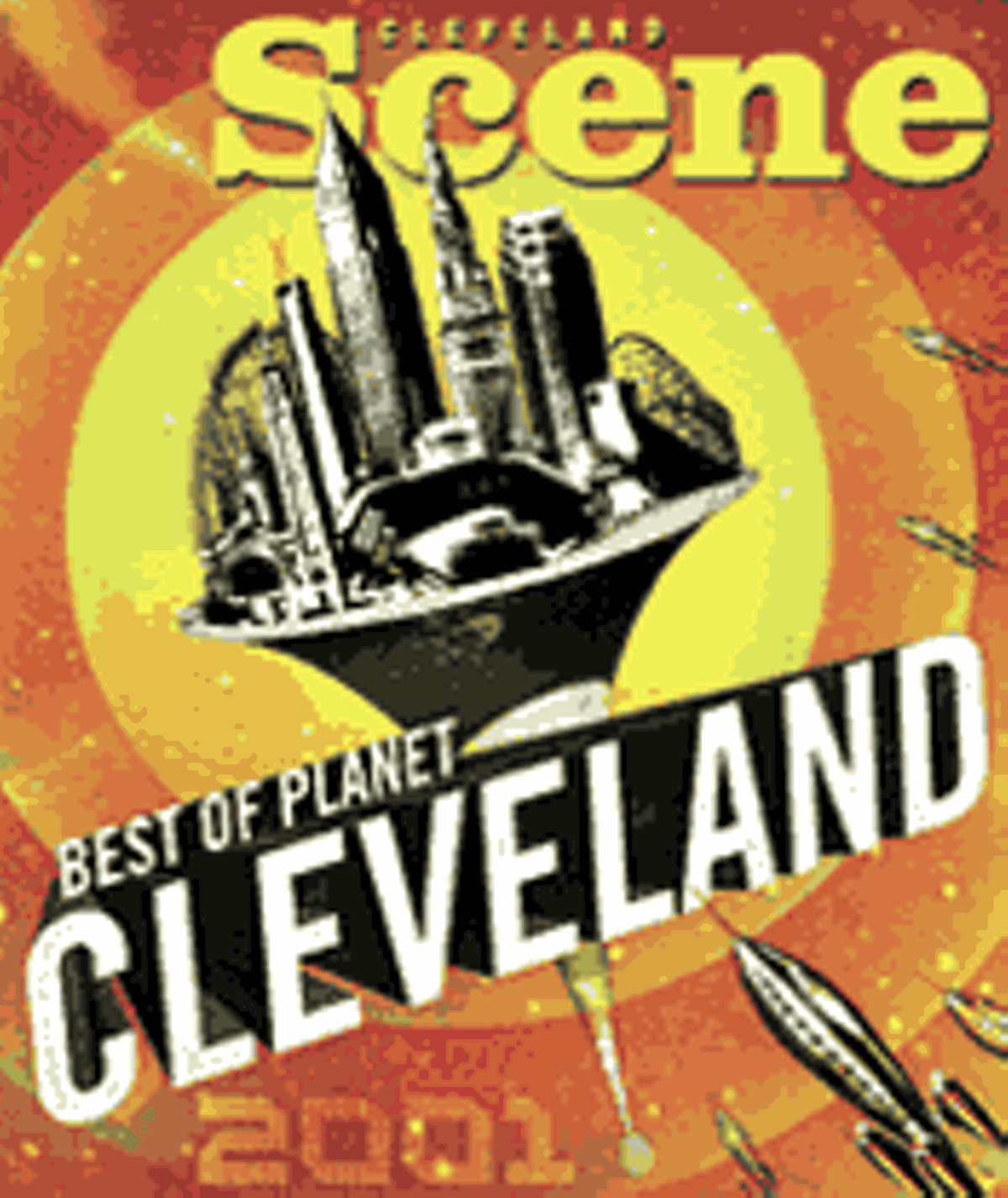Think of Roberto Alomar. Think of him playing for 12 or 13 years, but not for the Indians. Think of him doing it for, say, the Buffalo Bisons. Not because he's lost his mind, but because he wants to. This, basically, is what Amata has done. For more than a decade, he's worked as a public defender -- in juvenile court, pretty much the dregs of the criminal justice system in the ol' prestige department. It's not by accident nor incompetence. As the head of the public defender's juvenile court division, Amata actually seems to like the work. He's also damn good at it. Genetically predisposed to distrust authority, Amata thrives on cases other lawyers wouldn't touch. It is not uncommon to see him in the hallways of juvenile court, files in hand, tie yanked wayward, yelling at a prosecutor or social worker about some perceived injustice against his clients, who all too often have no idea how lucky they are that he's their lawyer.
Around the beginning of August, if you happened to turn on the television or radio when Carmen Policy, Dwight Clark, or Al Lerner were talking about this year's Browns, a curious thing happened: It was as if, by magic, the trio had showed up in January to take over the team -- a time that happened to coincide with the hiring of Butch Davis. To paraphrase Claude Rains in Casablanca, they were shocked, shocked to find a crappy team had appeared on the field during the 2000 season. The subtext of all this was that former coach Chris Palmer should have done better with what he had. And maybe he should have. There were games in which the team looked as though it had simply given up. Yet it wasn't Palmer who was responsible for Tim Couch's fluke injury, which probably had more to do with the Browns' woes than anything else. Nor was Palmer one of the resident geniuses behind the Browns' first two drafts. It was Palmer, though, who took the fall when it all went bad. This is the way it is in the NFL, and Palmer knew it. Butch Davis, take note.
Blondes are to television news what John Wayne is to westerns, but Channel 3's Carole Chandler stands apart from the other fair-haired girls. Her nightside reporting gives Cleveland a cool, gleaming edge. The petite, rasp-voiced John Carroll grad seems as though she could elicit a confession from a murder suspect and offer tips on where to get leather dry-cleaned. The face says, "Good morning, Sunshine"; the voice says, "Knock it off, Buster." She's Rosalind Russell in a Jennifer Love Hewitt world.
Cleveland short-film auteur Robert Banks can sniff out a deal on celluloid the way a great white shark sniffs chum from three miles away. Call it "buyback," "expired," or "short-end film stock"; Banks calls it thrifty, and he uses the footage to award-winning ends. Honored this year by the BBC and here at home by the Cleveland Cinematheque, Banks is living proof that what goes on the film is more important than the cost of getting it there. This distinction places him firmly at the other end of the spectrum from most Hollywood filmmakers.
The cover of Maxim magazine is typically reserved for the hottest actresses in Hollywood. So what was Clevelander Monica Potter doing there? Well, Potter has done all right for herself in Tinseltown, if leading roles in Patch Adams, Along Came a Spider, and Head Over Heels mean anything. But she reviles the place, and as the magazine teased, Potter "still stubbornly insists on living in Cleveland. That's right, the one in Ohio." Asked to account for this aberration, Potter said, "It's a great place to raise kids. I had a very happy childhood there, growing up on a special street where everyone knew everyone." Perhaps it's time Cleveland elected its first blond mayor.
A celebrity comes to Cleveland. Johnny's Downtown gets another customer. "Whenever they're here, they're here," says owner Joe Santosuosso. Of course, the famous don't wish to be pestered, and their dinner reservations are a secret Santosuosso and his staff keep sacred. He did, however, confirm that Denzel Washington supped at Johnny's when he was scouting Cleveland for film locations. Boxing promoter Don King's vertical hair is a common sight, and George Clooney was not only a frequent diner during his movie shoot, he dropped by the Little Bar, also owned by Santosuosso, when he felt like drinking, dancing, and singing. Cleveland Indians, Browns, and Cavaliers are regular patrons as well.
They think they want to go to the Flats. They heard (from someone who was here 5 years ago, who heard it from someone 10 years ago) that the Flats is The Place to Go in Cleveland, the Symbol of the City's Rebirth. But your friends are not the type who enjoy puking in sidewalk trash cans at 2:30 a.m. So you take them east, drive slowly up Mayfield Road (because that's the only speed at which you can drive up Mayfield), park on a side street, stroll past the old houses, and linger in front of a gallery window or two. Then you treat them to a sublime evening of good wine, Italian food, coffee, pastries, and a walk back up the crowded streets. If your friends are Midwesterners, they'll be in awe. Even if they're jaded types from the coasts, they'll know an authentic city neighborhood when they see one.
Even before a year-long art exhibit was installed, Lake View was already Greater Cleveland's most surprising, magical cemetery. Wandering its paths and hiking its rolling hills, you can easily happen upon famous Clevelanders, from John D. Rockefeller (his grave marked with a tall obelisk) to Eliot Ness, whose ashes only recently came to rest there.
Having a date at the zoo eliminates a lot of typical first-date worries, like how to dress (casually and weather-consciously), what to talk about (the beautiful beasts around you), and what to eat (a picnic under the oaks). You and your date can take a quiet stroll down the "boardwalk" stairway or trot by the African Savanna like two wild fourth-graders on a field trip. Isn't adventure romantic? Cap off the date with something memorable, like riding a camel or witnessing a storm in the RainForest. Of course, if there's no animal magnetism between you two, you can always go home early, claiming a headache from the stinky elephant poop in the pachyderm building.
Budding genealogists don't have to risk paper cuts or aching eyes from scanning obituary records and microfiches anymore. While the Cleveland Public Library's database is not a complete record of all deaths in Cleveland, it does include around 800,000 from the early 1800s to 1975. Gleaned mostly from Plain Dealer, Cleveland Herald, Cleveland Press, and cemetery records, the online database is a breeze to search -- even if you only know the church some mystery relative attended and the year the person died.
SCENE Supporters make it possible to tell the Cleveland stories you won’t find elsewhere.
Become a supporter today.






